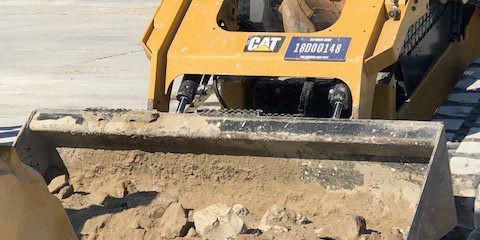TYNDALL AIR FORCE BASE, Fla. (AFNS) —The Air Force Civil Engineer Center (AFCEC) laboratory at Tyndall Air Force Base is on a mission to repair battle-damaged runways as quickly as possible, with minimal materials, manpower, and equipment.
For the past three years, lab experts have been perfecting the technology, equipment, and processes to deliver a capability called expedient and expeditionary airfield damage repair, or E-ADR.
“E-ADR is like a mini version of rapid airfield damage recovery,” said Dr. Bobby Diltz, AFCEC Airfield Damage Recovery Research, Development, Test and Evaluation Program Manager. “RADR is a proven method for recovering airfields after an attack, but it requires a few dozen vehicles, Airmen, and pre-positioned materials.”
E-ADR is for scenarios that don’t have the required manpower, equipment, and materials RADR needs, Diltz said.
The agility of a quick and easy runway repair solution was on full display during a recent joint capability technology demonstration operational utility assessment hosted by the Tyndall AFB Silver Flag Testing Facility and was the first of several planned demos. The three-day event late last year brought together airfield damage recovery teams from the U.S. Navy, Army Corps of Engineers, and Air Force to demonstrate E-ADR advancements.
Florida Airmen from both Hurlburt Field and Tyndall AFB participated in the event, overseen by Diltz and led by Tech. Sgt. Chad Parnell, E-ADR Crater Chief. Participants performed three types of pavement-repair technologies and followed processes that reduced typical material demands to fix a crater by about 90%.
“These are uniformed Airmen, so this is no longer the lab technicians or people that have done this process,” Diltz said. “This is the real deal.”
While still in the planning phase, eventually E-ADR will be a physical kit containing materials, equipment, and guidance for techniques and procedures.
“It’s exciting to watch the progress and demonstrations of this capability,” said Craig Mellerski, AFCEC Requirements, R&E and Acquisitions Division Chief. “The CE lab continues to provide new capabilities to our engineers, and E-ADR is one of many contributions to fill existing and future needs.”


